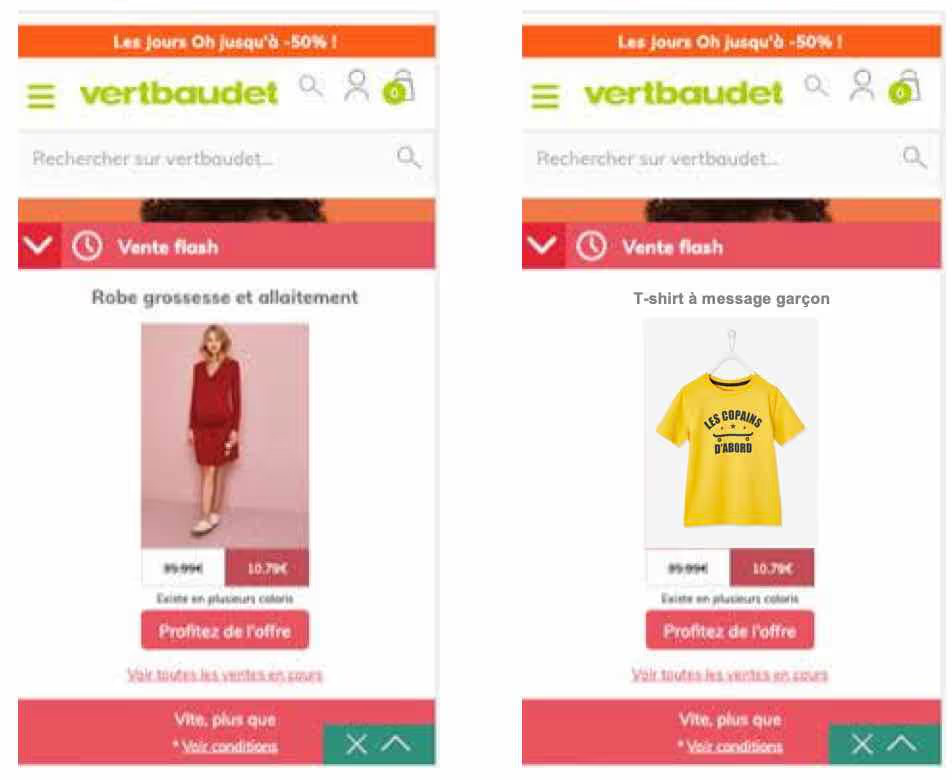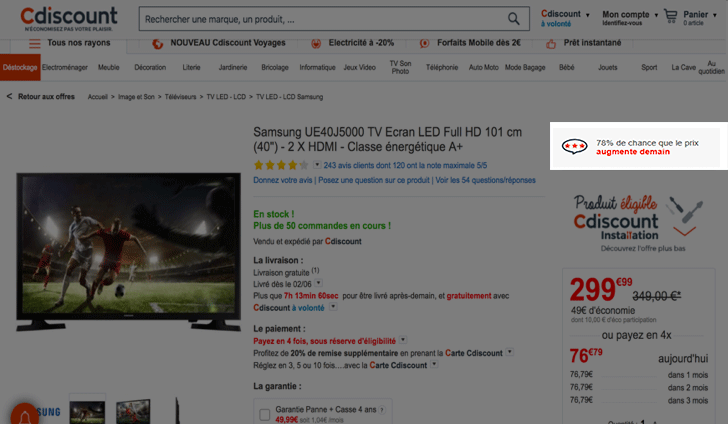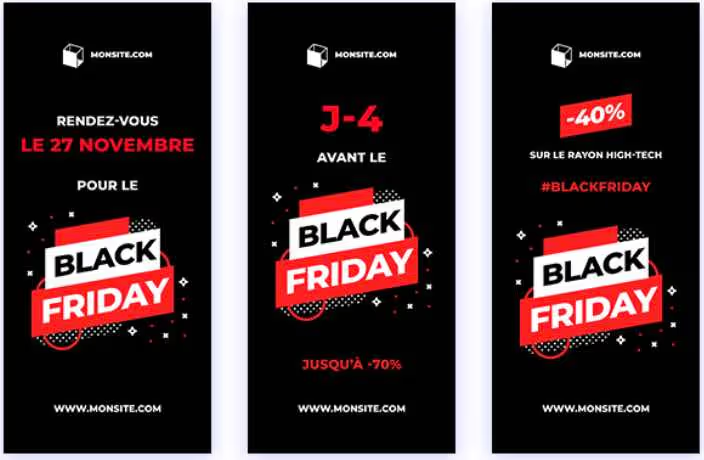How to personalize your visitors’ customer journey

Between first arriving on your website and making a purchase, consumers move through several stages, interacting digitally with your brand at multiple key moments before converting. Given its vital importance to bottom-line revenues, all brands aim to provide a high-quality experience throughout this customer journey.
Successfully delivering a seamless customer journey requires an organized approach and the ability to continuously adapt the experience to the changing behavior of each and every one of your website visitors, across every touchpoint. This is where personalization comes in, enabling you to react to behavioral changes and provide a tailored experience.
How can you build an end-to-end customer journey that automatically adapts to consumer behavior? Where should you focus your efforts, and what types of personalizations should you deploy to achieve customer satisfaction? This article aims to explain.
1 The transformation of customer journey trends
Thanks to the increasing use of digital channels, customer journeys have transformed. Adding to this, the needs of today’s consumers are now much more complex: visitors use multiple channels and expect to receive a seamless and consistent customer experience that is adapted to their needs across all of them.
Due to the constraints of the pandemic, we've reached a turning point in how consumers’ digital journeys are shaped, with two key trends emerging:
> A dramatic increase in online purchases
We’re currently seeing digital transformation across the user journey. Customer behavior has changed - many more consumers have become digital first, driving enormous growth in online purchases. Based these trends emarketer predicted that US ecommerce sales would grow by over 32% in 2020 - even while brick-and-mortar spending declined. Your digital strategy must support this, delivering customer engagement across different channels.
The challenge for brands is not only to satisfy their loyal customers and those who are used to buying online, but also to build lasting, customer-centric relationships with the 29% of consumers who said they’d do more digitally after the first lockdown. They need to understand their motivations and meet their expectations to orchestrate a seamless customer experience across the lifecycle. Customers expect a consistent experience online that removes friction and helps them achieve their objectives.
The upswing in online customer journeys is shaking up digital strategies, and brands must rely on the customer data at their disposal and on visitor behavior if they are to provide an optimized experience for every individual consumer across all channels.
> An increase in click & collect and ship-to-store in customer journey
Other practices designed to encourage in-store footfall, such as click & collect and ship-to-store, are emerging and changing customer journeys and the digital customer experience.
To promote these new purchasing methods, brands must rethink the experience they deliver on their websites to make it easy for visitors to choose the approach that best matches their needs and customer expectations.
Visitor behaviors are changing very quickly and brands must find the right solutions to adapt the overall customer experience easily if they want to retain more shoppers and boost online conversions.
2 Customer journeys adapted to each visitor thanks to personalization
The challenges of a seamless customer journey
In this context, brands must be able to provide seamless purchasing journeys personalized to the needs of their entire customer base. Achieving this means overcoming multiple challenges:
- Successfully matching visitor data to provide a coherent omnichannel experience.
- Offering experiences adapted to the visitor’s maturity in the customer journey and personal preferences.
- Retaining visitors to create long-term relationships that drive brand loyalty and lifetime value.
Web personalization, the must-have solution
According to our latest research, 75% of US consumers expect personalization as standard - and 73% said not providing a personalized experience would change their future purchases from that brand.
By analyzing visitor data and utilizing it at the right time, brands can create a data-driven strategy that optimizes the customer experience of each visitor based on their preferences and needs at a given moment, mapping this to the customer journey.
Additionally by using predictive algorithms, brands can analyze visitor data even more closely and to identify the conversion probability of visitors or their interest in a product. Leveraging this actionable, contextual information delivers a significant competitive advantage for brands wishing to provide a relevant solution to each visitor on their website, increasing customer lifetime value.
What are the benefits of personalization?
With personalization, actions can be taken at every stage of the customer journey, enabling brands to provide a consistent customer experience strategy that:
- Boost conversions throughout the customer journey
- Increase visitor engagement
- Reduce churn
- Generate qualified leads
- Increase customer retention
- Guarantee the ROI metrics of promotional campaigns
3 When should you personalize the customer journey?
Personalization allows you to make the customer journey seamless, helping you boost conversions and move consumers along the sales funnel. You can personalize every stage of the customer journey, including:
- On the first visit: encouraging potential customers to convert to your brand
- After an in-store visit: enabling them to stay in contact with your visitors and ensuring they return to your website, rather than switch to a competitor
- After a website visit with no sale: reminding them of the contents of their cart and encouraging them to come back and checkout the purchase
- After a purchase online or in-store: onboarding, asking for a review or highlighting complementary products they can buy, driving cross sell opportunities and creating promoters for your brand
- On a return website visit: encouraging the visitor to convert again and to increase their cart value
- By email after a long period without visits to your website: tempting the visitor to return and restart the customer relationship.
There are many possible touch points and the goal is therefore to trigger your personalized experiences at strategic moments in the visitor’s experience, to encourage them to convert, by returning to your website or using other online and offline marketing channels.
4 Which elements should you personalize on the customer journey?
Digitally, there are multiple ways to improve the customer experience - therefore the goal is to personalize the key elements in the visitor journey. Here are some examples:
Personalizing home page content
Brands must use the real estate on their websites wisely to promote the products that will make visitors convert. Because product catalogues are often extensive, until now brands had to make choices and display the products that they believed would appeal to the greatest number of people.
With personalization, brands can now focus on individual customer needs and proactively display a different homepage depending on the visitor’s interests. This provides an enhanced customer experience by optimizing this vital shop window on their websites.
Brands can use predictive algorithms, which can identify a consumer’s interest in a certain product category, to automate the triggering of this personalized experience on their very first visit. It’s also possible on a return visit, by drawing on previous purchases or the pages viewed during the last visit.
For example, childrenswear retailer Vertbaudet personalizes the flash sales on its homepage with segmentation so that visitors can directly access the offers in the categories that interest them most. Through this tailored experience, click rates increased by 22% and conversion rates grew by 20 to 30%.

Messages
Each visitor has their preferences and may not be receptive to the same messages as someone else when looking to make a purchase. Make the journey individual - use personalization to contextualize your messages and meet the expectations of each and every visitor on their customer journey with an engaging customer experience.
Managing stress marketing messages
Online, if stress marketing messages are inappropriate or too numerous, the visitor experience is likely to be damaged. Personalization can prioritize the messages displayed by showing only those that are most relevant for a particular visitor. This improves marketing strategies and streamlines the journey to purchase, while reducing visitor frustration and boosting profitability.
Cdiscount relies on Kameleoon’s predictive algorithms to prioritize the messages visitors are exposed to: urgency-inducing messages (Only 2 items left!) or social proof messages (50 people have bought this product). Instead of multiplying its messages, Cdiscount adapts to every visitor’s receptiveness, leading to a 5% increase in conversion rates.

Adapting reassurance messages to the desires of the visitor
It is also possible to personalize reassurance messages, for example with regard to shipping, by displaying the closest collection point as a default or even by highlighting click & collect with the closest store and the next available time slot displayed.
Navigation and merchandising
You can also personalize the elements that enable visitors to navigate on your website so that they more quickly and easily find the products they’re looking for, helping them move forward along the customer journey.
For example, you could reorganize the menu, prioritizing the categories that most interest the visitor, or change the product listing display, highlighting items they view or that fit their budget.
Retargeting ads and emails
To stay in contact with your visitors even off your website, whether to remind them about their cart, suggest complementary products, or let them know about promotional offers, holistic retargeting and email campaigns across all channels are essential.
By personalizing these media, you can increase multichannel visitor engagement and the chances that they’ll return to your website.


As you can see, customer journeys are now each very different, transforming the online customer experience. These days it’s vital to personalize the visitor experience from the very first visit, evolving throughout the relationship if you want to connect with consumers across the customer lifecycle. The more you personalize, the more you learn about your visitors, increasing your customer intelligence. This will then enable you to then continuously improve the experience of your loyal customers, boosting conversions and revenues.





